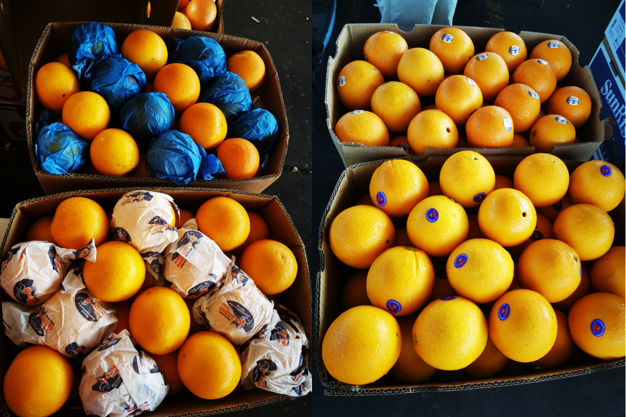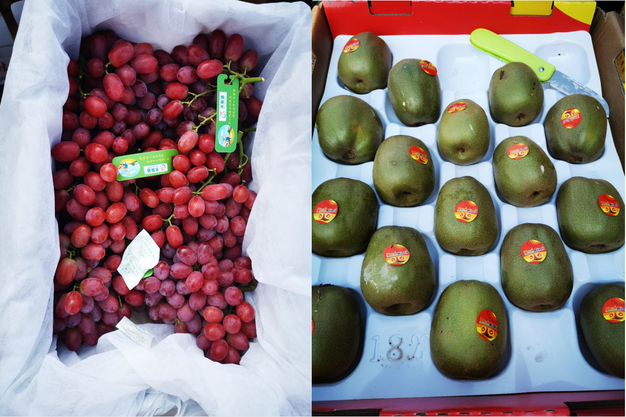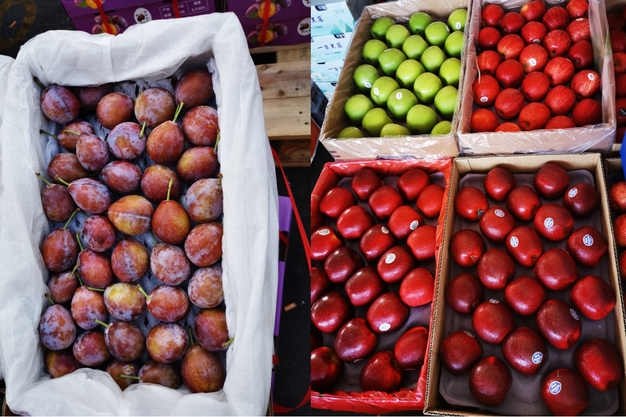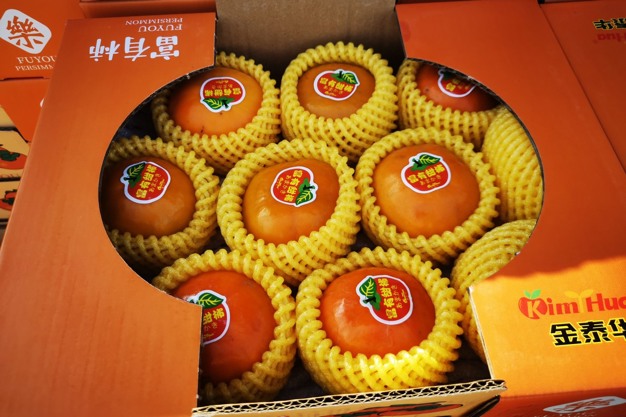Over the past two weeks, the volume of South African oranges and New Zealand apples arriving in the Chinese market has decreased, leading to a rise in prices. Meanwhile, among domestically produced fruits, Xinjiang plums, which have garnered significant market attention, have entered the market with early arrival volumes exceeding those of the same period in previous years.
The reduced supply of South African oranges, combined with improved firmness compared to earlier arrivals, has driven prices up from over ¥100 per box in July to approximately ¥240 per box currently. The prices for both sweet and sour oranges are now similar. Last year, the same specifications were sold for around ¥170-180 per box during this period, marking a current price increase of 30%-40%. Merchants have noted that the high prices, coupled with subpar taste, have slowed sales. Additionally, a small shipment of Cambria oranges arrived last week, priced at around ¥280 per box or higher. However, this batch quickly sold out, and no further arrivals have been reported, with the shipment delayed compared to previous years.

Left: South African oranges; Right: Australian oranges.
The arrival of Australian oranges has increased significantly, resulting in an overall price drop. While a few premium brands have maintained strong pricing at ¥420 per box due to their superior quality, most shipments are selling at around ¥300 per box. Merchants have observed that the large volume, along with a still-sour taste, has contributed to the price decline.

Left: Yunnan seedless red grapes; right: Sichuan red core kiwifruits.
The reduced arrival of imported apples in the past two weeks has caused prices to gradually rise. Currently, New Zealand's imported Rose and Gala apples are priced similarly at around ¥350 per box, representing a 15% increase compared to last month when prices were stable. The market for imported apples from South Africa and Chile has also seen a corresponding rise. Some merchants have noted that apple prices have been climbing almost daily, and due to the limited supply, current sales are relatively strong.

Left: Xinjiang plums; Right: imported apples.
Xinjiang-produced plums have now hit the market. All shipments are airlifted, with the fruit currently displaying ideal firmness and size. According to merchants, this year's production is higher than in the past, resulting in greater market availability and lower overall prices. Currently, 2kg boxes are selling for about ¥85-90 each, whereas in previous years, they were priced over ¥100 during the early season.
Most of the blueberries currently on the market come from Shandong, Liaoning, Yunnan, and other regions within China, with no recent arrivals of Peruvian blueberries.

Rich persimmons.
Among the seasonal Chinese fruits available, Fuyu persimmons have recently been introduced, with merchants reporting slightly higher prices compared to the same period last year. Other popular fruits with high sales volumes include Dali winter jujubes, cherry apples, and Shine Muscat green grapes. Additionally, Sichuan red-core kiwifruit has begun to arrive in small quantities.
